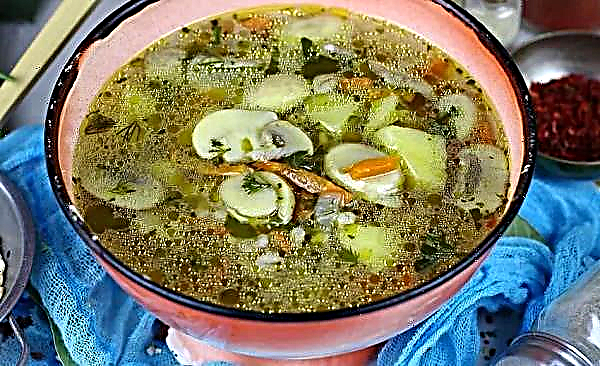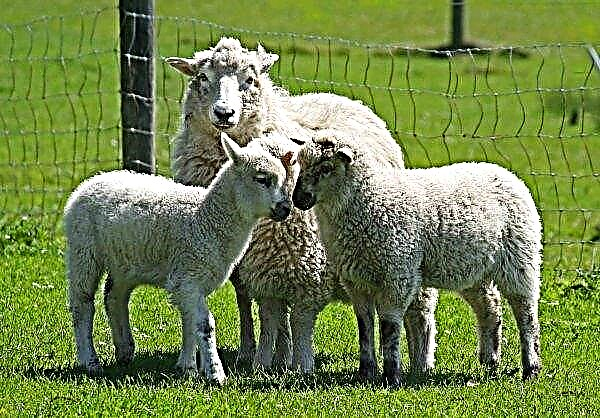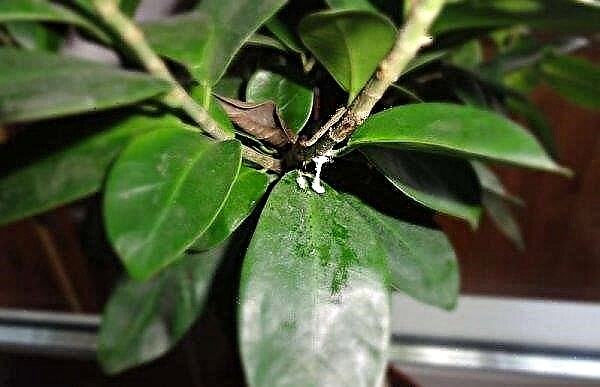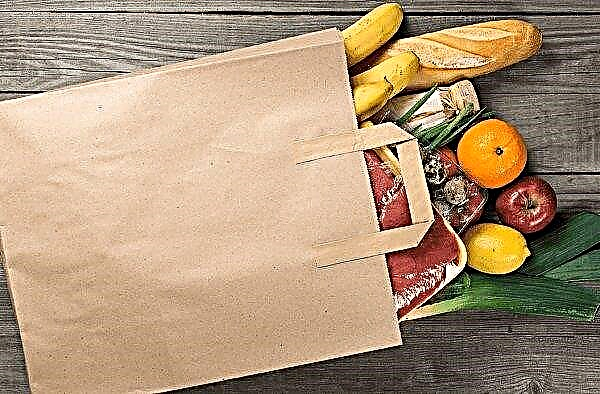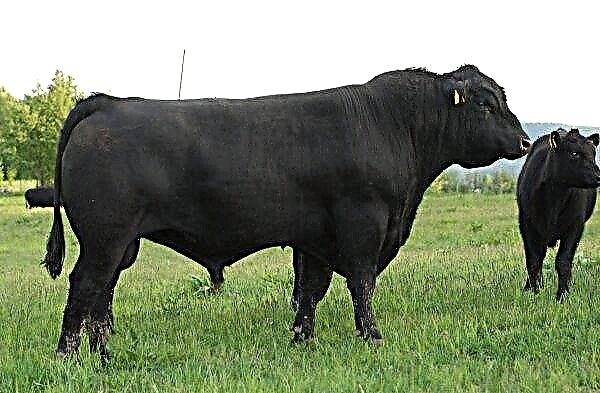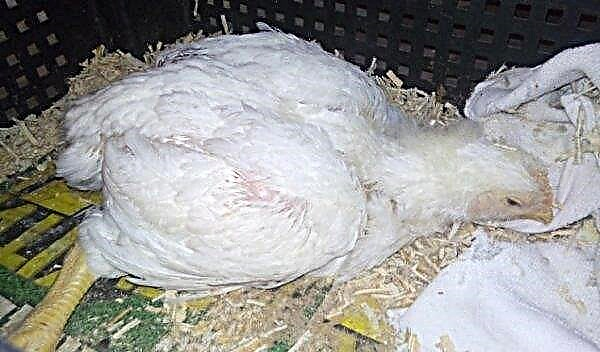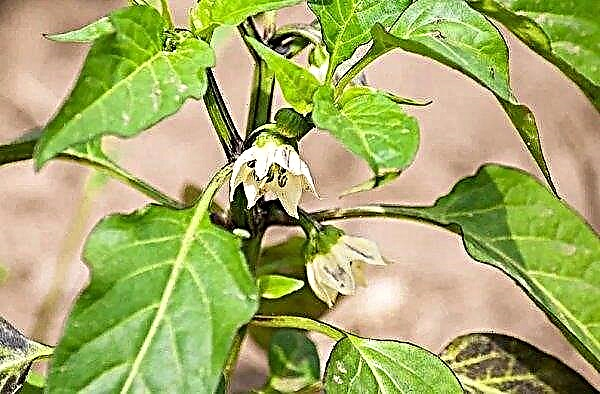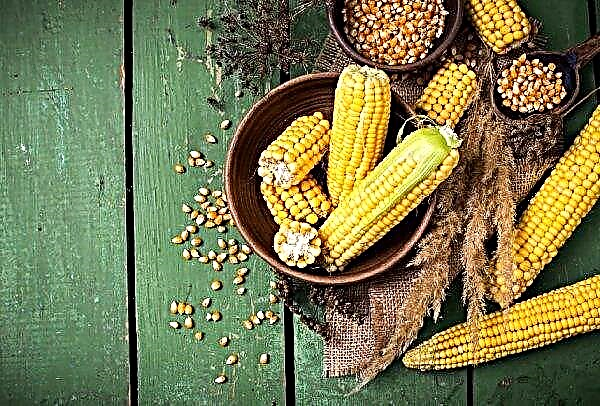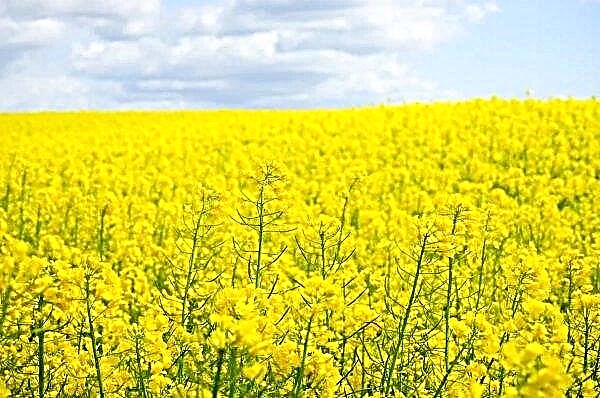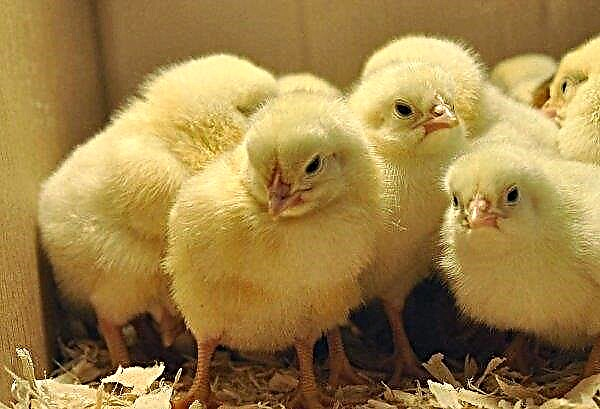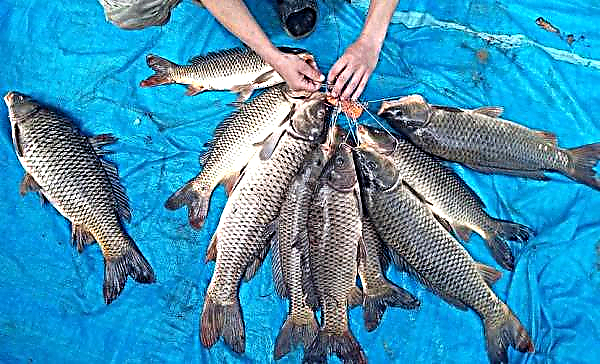Cucumber To everyone's envy - this is a unique hybrid gherkin variety that has received wide distribution and many positive reviews from both experienced farmers and beginning summer residents. The reasons for this demand, as well as how to grow a hybrid, read on in the article.
Description of the variety of cucumbers Envy of all
Hybrid cucumbers Everyone envy F1 - the result of the work of the Ural breeders. The form is included in the premium collection from the "Ural summer resident".
Features of growth and flowering
The bush is medium-sized, notable for intensive growth - it quickly gives lateral shoots. A distinctive feature of the hybrid is also the ability to self-pollination, that is, for reproduction the plant does not need insects - pollen carriers. The type of flowering is bouquet (bunch), in each bouquet from 3 to 6 green leaves are tied.
Did you know? French commander and emperor Napoleon Bonaparte was so fond of cucumbers that He promised to generously reward the one who finds a way to extend their freshness during long military campaigns. However, the task was too complicated, and the reward was never paid.
The fruits have a regular cylindrical shape. In length, they grow up to 9-12 cm, and their weight ranges from 80 to 100 g. Cucumbers are painted in bright green color. The pulp of the fruit is juicy, without bitterness. The peel is dense, crispy, covered with white spikes.
Variety Productivity
Productivity of the variety is consistently high. Unlike other varieties, its fertility indicators are less tied to weather conditions and amount to 40 kg from 1 m² per season. In this case, up to 400 cucumbers can be obtained from each plant.
Ripening time
The variety under consideration refers to early ripening varieties. Fruits reach maturity 45–50 days after planting.
Advantages and disadvantages of cucumbers Envy of all
- Hybrid cucumber Everyone envy justifies its promising name with a lot of advantages:
- high yield, active fruiting until the first frost;
- excellent appearance and excellent taste characteristics of the fruit;
- lack of bitterness in the fruits;
- universality in application - it is remarkable both in fresh, and in canned form;
- self-pollination;
- endurance to adverse climatic conditions (in particular, unpretentiousness to lack of light);
- fast ripening;
- good resistance to parasite attacks and damage to various diseases;
- preservation of commercial qualities during transportation.
Among the shortcomings, the need to form a bush according to a strict scheme can be distinguished. In addition, if the rules of care are not followed, the bush can get sick with Fusarium, gray and white rot. For the same reason, the attack of harmful insects is not excluded.
Planting and growing varieties
Gardeners practice cultivating everyone's envy by sowing seeds in open ground or by seedlings.
Seed directly into the ground
Direct sowing gives excellent results in areas with warm climates. Sowing is preferably carried out in several passes, but only in the interval from mid-May to mid-June. This will make it possible to preserve fragile bushes in the event of an unexpected cold snap, as well as extend the fruiting period. Keep in mind that when sowing the earth should warm up to + 15 ° C. In order to guarantee a plentiful harvest, the landing site must be prepared in advance.
Did you know? The skyscraper in London, St. Mary's Ex 30, is better known as the London Cucumber.
Stages of arranging a warm multi-layer garden:
- In the fall, select a sunny spot on the site.
- At a depth of 30–50 cm, lay a drainage (brushwood, straw, grass, branches will do), then carefully compact it.
- Add fresh manure from above and leave it until spring (everything settles during the winter).
- In early May, add humus or a layer of fertile soil on top.
 Lay the seeds to a depth of 1.5–2 cm, observing a distance of 15–20 cm between plants and about 65 cm between the beds. After completing the sowing work, cover the bed with polyethylene.
Lay the seeds to a depth of 1.5–2 cm, observing a distance of 15–20 cm between plants and about 65 cm between the beds. After completing the sowing work, cover the bed with polyethylene.Growing seedlings
The option with seedlings is more interesting - it gives the crop earlier. The soil mixture should consist of 2 parts of fertile land and 1 part of peat, optionally you can add a little sand.
Seeds must undergo standard procedures for pre-sowing disinfection, soaking and hardening:
- For disinfection immerse the material for half an hour in a 1% solution of potassium permanganate.
- For soaking put the seeds on the bottom of the container with gauze, pour water on top. The liquid should stand, but not cover the whole seeds. Soaking lasts 1-2 days until the cracking of the shell.
- For hardening wrap the seed in a damp cloth, place on a saucer and transfer to the refrigerator for 2 days. Keep the fabric moist at all times.
After the preparatory phase, plant the seeds immediately, without drying.
Do this in late March or early April using the following technology:
- Choose a small container for future seedlings - landing in separate containers will allow you to skip the picking stage.
- Fill the container with soil mixture, leaving 1 cm free on top (this will facilitate the irrigation process).
- In each glass with a substrate, deepen by 1.5–2 cm for 2-3 seeds.
Seedling care consists in periodically moistening the soil. Until the emergence of seedlings, the temperature in the room should be kept at + 25 ° С, then lower it to + 20 ° С. In addition, the risk of drafts is minimized.
After emergence, leave only the strongest sprout, remove the rest. Transplant seedlings to a permanent place after the soil has warmed up and the threat of frost return has passed. If winter still reminds of itself, cover the plantings on top with film material.
Variety Care Features
To achieve a good crop, perform competent care of cucumber bushes. This includes proper top dressing, irrigation, bush formation and some other procedures.
Watering and fertilizing
Hybrid bushes are demanding on moisture - the soil must be kept moist. However, do not allow swamping. Provided stable dry weather, irrigate the cucumbers once every 2-3 days. Use warm water for watering.
During the formation of fruits, cucumber bushes need additional recharge. Add complex fertilizers for cucumbers (minerals and organics) weekly, observing the dosage given on the package. Timely feeding will contribute to the formation of new ovaries.
Garter and bush formation
Despite the promised abundant fruiting of the hybrid to envy, inexperienced gardeners sometimes receive low yields when cultivated. The reason lies in the incorrect formation of shoots. First of all, for cucumber bushes, a garter to a vertical trellis is mandatory. It is necessary to form plants strictly in a single stem, and it is better to remove lateral shoots. In the sinuses of the first 3-4 leaf nodes, completely pinch off the flowers and stepsons. Then, as it grows, remove all growing shoots. Each node on the central stem can have a large number of ovaries, but only one leaf, so keep one leaf in the remaining nodes. Such a scheme improves illumination of the main stem and provides enhanced nutrition for the formed ovaries.
In the sinuses of the first 3-4 leaf nodes, completely pinch off the flowers and stepsons. Then, as it grows, remove all growing shoots. Each node on the central stem can have a large number of ovaries, but only one leaf, so keep one leaf in the remaining nodes. Such a scheme improves illumination of the main stem and provides enhanced nutrition for the formed ovaries.
Soil care
After the appearance of the first sprouts, the soil must be carefully loosened. Use forks for this, driving them into the ground between the beds. In the future, repeat the manipulation every 10 days.
Important! Due to the fact that the root system of the cucumber lies quite close to the surface, all procedures with soil should be carried out with extreme caution.
Along with loosening, weed weeds. And in order to retain moisture in the soil and prevent the growth of weeds, mulch the beds with sawdust or freshly cut grass. Do this every time after irrigation.
Pest and Disease Control
Despite the fact that the hybrid is resistant to the main group of cucumber diseases, as well as various harmful insects, with a gross violation of the rules of care, it can be affected by fusarium wilting, gray and white rot. Among the dangerous insects, it is worth highlighting the gourd aphids, spider mites and whiteflies. From Fusarium wilting, cultivate the soil with Fitosporin or Trichodermin (a week before planting). If it was not possible to avoid infection with gray rot, you should stop the irrigation of the beds for several days. Remove the affected parts of the bushes, and sprinkle the places of cuts with copper-chalk powder (mixing chalk and copper sulfate in equal parts) or charcoal. Take similar measures to combat white rot.
If it was not possible to avoid infection with gray rot, you should stop the irrigation of the beds for several days. Remove the affected parts of the bushes, and sprinkle the places of cuts with copper-chalk powder (mixing chalk and copper sulfate in equal parts) or charcoal. Take similar measures to combat white rot.
The following tincture will help get rid of melon aphids and spider mites: pour 30 g of red pepper and 200 g of tobacco dust with 10 liters of hot water (+ 60 ° C). Insist the remedy throughout the day. Then add 2 tbsp. l wood ash and liquid soap. Treat all bushes with this compound, and repeat the procedure after a week. Summer residents cope with whitefly with the help of traps from pieces of plywood, covered with white paint and adhesive.
Features of harvesting and storage of crops
Cucumbers are ready for collection already on 45-50 day from the moment of planting. The main rule when harvesting cucumbers is regularity. Depending on the destination, tear down greens of different sizes. So, 8-10-centimeter specimens are good for canning, although some recipes require small fruits - about 4 cm in length. For fresh consumption, wait until Zelentsy reaches a length of 10-12 cm. Allow morning or evening harvest to harvest. Using a sharp knife, carefully cut the fruit, leaving the stalk on the branch. Unfortunately, fresh cucumbers are not stored for long, so in the winter they are usually salted or pickled. By wrapping the fruits in a bag of polyethylene, you can extend freshness for up to five days.
Allow morning or evening harvest to harvest. Using a sharp knife, carefully cut the fruit, leaving the stalk on the branch. Unfortunately, fresh cucumbers are not stored for long, so in the winter they are usually salted or pickled. By wrapping the fruits in a bag of polyethylene, you can extend freshness for up to five days.
Important! The collection of fruits from time to time or once a week is unacceptable. Inspect plants for greens every other day. It is also strictly forbidden to pull, pluck or twist the stem.
It is very useful to have such a universal and hardy hybrid form of cucumber, like everyone's envy, at your summer cottage. Subject to a caring attitude, cucumber bushes will repay you with an abundant harvest of delicious fruits.

